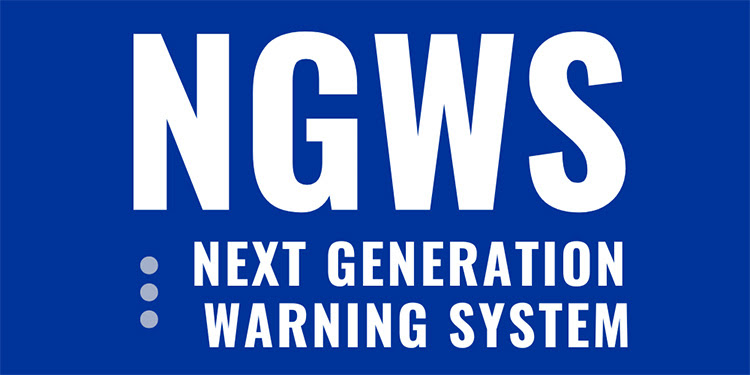UPDATED: Corporation for Public Broadcasting Ends Its Next Generation Warning System Grant Program
Recent loss of funding halts distribution of public safety grants, jeopardizing local stations’ ability to serve and protect rural and disaster-prone communities, the CPB said

WASHINGTON, D.C. —Following the passage of the Rescissions Act of 2025 that defunded the Corporation for Public Broadcasting (CPB) and left the organization without operating funds for the fiscal year beginning October 1, 2025, the CPB has announced that it is shutting down its Next Generation Warning System (NGWS) grant program because it can no longer absorb costs and manage the program.
The CPB is slated to shut down at the end of Sept. with only a small staff to manage the shutdown remaining in place through the end of 2025.
In making the announcement, the CPB said that Congress recognized the essential role of local public media stations in protecting public safety when it created the NGWS grant program in 2022 and appropriated $136 million over three years to support that mission. It also affirmed CPB’s role as a steward of federal public media funding by directing FEMA to partner with CPB to implement and administer the program in line with congressional intent.
“CPB has been fully invested in the NGWS program and its mission to protect the American public,” said Patricia Harrison, CPB President and CEO. “This is one more example of rescission consequences impacting local public media stations and the communities they serve—in this case, weakening the capacity of local public media stations to support the safety and preparedness of their communities.”
The CPB reported that under its administration, NGWS was built from the ground up, prioritizing rural and disaster-prone areas. CPB brought the specialized knowledge of local public media stations combined with decades of federal grant management and compliance experience needed to administer such a complex federal program. In one year, CPB hired a dedicated NGWS team, issued requests for applications, and provided technical assistance to stations nationwide.
From the first round of funding received in 2022, CPB awarded 44 grants totaling $21.6 million. Demand far exceeded available resources, with a second round of applications drawing more than $110 million in requests from 175 stations, the CPB said.
With CPB’s closure imminent, the CPB said that FEMA should assume responsibility for disbursing the funds as Congress intended. If it doesn't, most of the FY 2022 funding—and all funds from FY 2023 and FY 2024—will go undistributed, the CPB stressed.
The professional video industry's #1 source for news, trends and product and tech information. Sign up below.
If FEMA does not take control of the program, the CPB warned that critical emergency alerting equipment will not be purchased, leaving communities, especially those in rural and disaster-prone areas, without the upgrades Congress intended.
In response to the announcement Kate Riley, president and CEO of America’s Public Television Stations, said that "today’s announcement by the Corporation for Public Broadcasting (CPB) that CPB can no longer administer the Next Generation Warning System (NGWS) grant program is yet another devastating result of the rescission of public media funding."
“Despite the claims during the rescission debate that emergency alerting and public safety services would not be affected by eliminating all public media funding, we are now seeing local stations forced to reduce staff, services and in some cases their coverage area - which will reduce the reach and effectiveness of emergency alerts," she noted. "“In addition, the ending of the Next Generation Warning System will make it even harder for the most at risk stations, particularly those in rural areas, to replace aging infrastructure and support enhancements to alert and warning and other public safety communications systems to ensure resilience and the ability to meet the evolving nature of public safety challenges."
Echoing the CPB, she also said that "with the closure of CPB, America’s Public Television Stations call on FEMA to establish a new process for delivering this funding to public broadcasters."
“In addition, America’s Public Television Stations urge Congress to restore essential direct funding to local stations throughout this country whose communities depend on them for lifesaving public safety services, proven educational resources and essential community connections.
"Public television is one of two technologically diverse pathways that FEMA’s Integrated Public Alert and Warning System (IPAWS) uses to send Wireless Emergency Alert (WEA) messages from federal, state and local public officials to cell phone subscribers," she added. "The encrypted messages ride over the public television broadcast spectrum and infrastructure directly to cell phone providers who in turn send them to their subscribers. Sending these messages over the public broadcasting pathway ensures they can reach every corner of the country, even if internet service is compromised or unavailable. These geo-targeted messages can reach subscribers wherever they are in the event of an emergency."
“All of these services that ensure Americans’ safety are now at risk with the closure of CPB, the end of CPB’s administration of the NGWS program and the loss of federal funding for local stations," she said, concluding with a call for Congress to restore the funding for public media.
George Winslow is the senior content producer for TV Tech. He has written about the television, media and technology industries for nearly 30 years for such publications as Broadcasting & Cable, Multichannel News and TV Tech. Over the years, he has edited a number of magazines, including Multichannel News International and World Screen, and moderated panels at such major industry events as NAB and MIP TV. He has published two books and dozens of encyclopedia articles on such subjects as the media, New York City history and economics.

